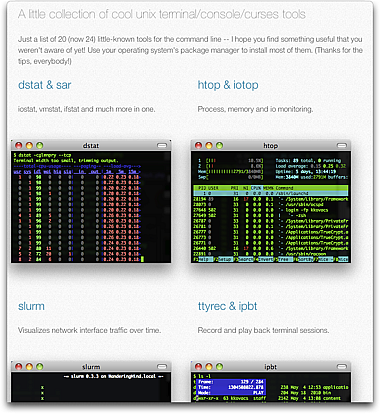Ever notice that if you mention how much you love an Apple product, someone will inevitably come along and point out that you could have bought _product X_ that does _task Y_ just as well as your Apple product, plus _task Z_ as well. Oh, and it costs less too!
Yeah, I can hear you groaning from here.
It’s been my experience that these critiques usually come from users who know quite a bit about computers. Often, it’s the kind of person that friends call to fix their computer when it breaks. This type of user might even build their own PCs. In short form: they know more about computers than the average person.
It seems that as someone learns more about computers, the less they like Apple products, but there’s this cross over. Many of the really, really stupidly bright, mega-rockstar type technology people I know use Apple products. There’s an apparent majority amongst the Silicon Valley community who, at a minimum, recognize that Apple builds great products, even if they use something else. Have a look at photos taken at your favorite conference and you’ll see a lot of Apple logos staring back at you.
When plotted on a graph, this pattern looks strangely similar to the “uncanny valley graph”:http://en.wikipedia.org/wiki/Uncanny_valley.
!http://www.bradlanders.com/wp-content/uploads/2011/06/apple-fondness-graph.png(My probably wrong view of Apple haters)!
Before you get too excited, let me explain why this is a horrible graph that I probably should have abandoned early on:
* This graph doesn’t work in reverse. E.g., I’m pretty sure John Gruber (and his ilk) isn’t the smartest guy in Silicon Valley. Hell, he lives in Philadelphia. I also don’t think the guy over at the Verizon store is dumb. He’s usually pretty helpful, and I certainly can’t understand Verizon’s product offerings as well as him, so he’s got one up on me.
* Not everyone conforms to this graph; nor do I think that’s a problem. For example, there are a ton of brilliant engineers at Google (and elsewhere) who are more knowledgable about computers than I could ever hope to be. I’m generalizing here. This is _my_ blog. I get to do that. Feel free to yell at me if it makes you feel better.
“Joel Spoolsky expressed”:http://www.joelonsoftware.com/articles/fog0000000018.html (far better than I have here) a reason why more savvy users might not recognize the value of Apple products.
bq. Your typical architecture astronaut will take a fact like “Napster is a peer-to-peer service for downloading music” and ignore everything but the architecture, thinking it’s interesting because it’s peer to peer, completely missing the point that it’s interesting because you can type the name of a song and listen to it _right away_.
As a user becomes more familiar with the computer, all of the arcane settings and components that frustrate normal users become a source of mastery. Like a talented guitar soloist, they revel in their own ability to wield their device. I know the feeling. Sometimes I feel like a real badass when I try some new bash hack that I picked up somewhere on the internet, and bash is about as terse and arcane as it gets1.
This leads us to the rightmost portion of the graph. As you move furthest to the right, you get in to groups of people for whom computers are their livelihood. They probably work in the industry, and many of them are developers and technology business entrepreneurs. For this group, tasks like setting up customized notification applications have become minutia. These people play a computer like Chopin played the piano.
Even though some in this group still rabidly dislike Apple products, the appreciation by many reaches a new level. Once you’ve tried to replicate Apple-like simplicity, you recognize how difficult it is. However, if your at this point and you still _like_ the minutia of building a computer, you’re probably not going to be an Apple fan.
I think I just had an epiphany. Time to make some more flame-bait graphs.
p(comment-meta). [1] – Calm down, I love bash, but imagine your mom trying to use it. Yes, I also realize that there are far more arcane technologies. Can we go back to watching the movie now?

